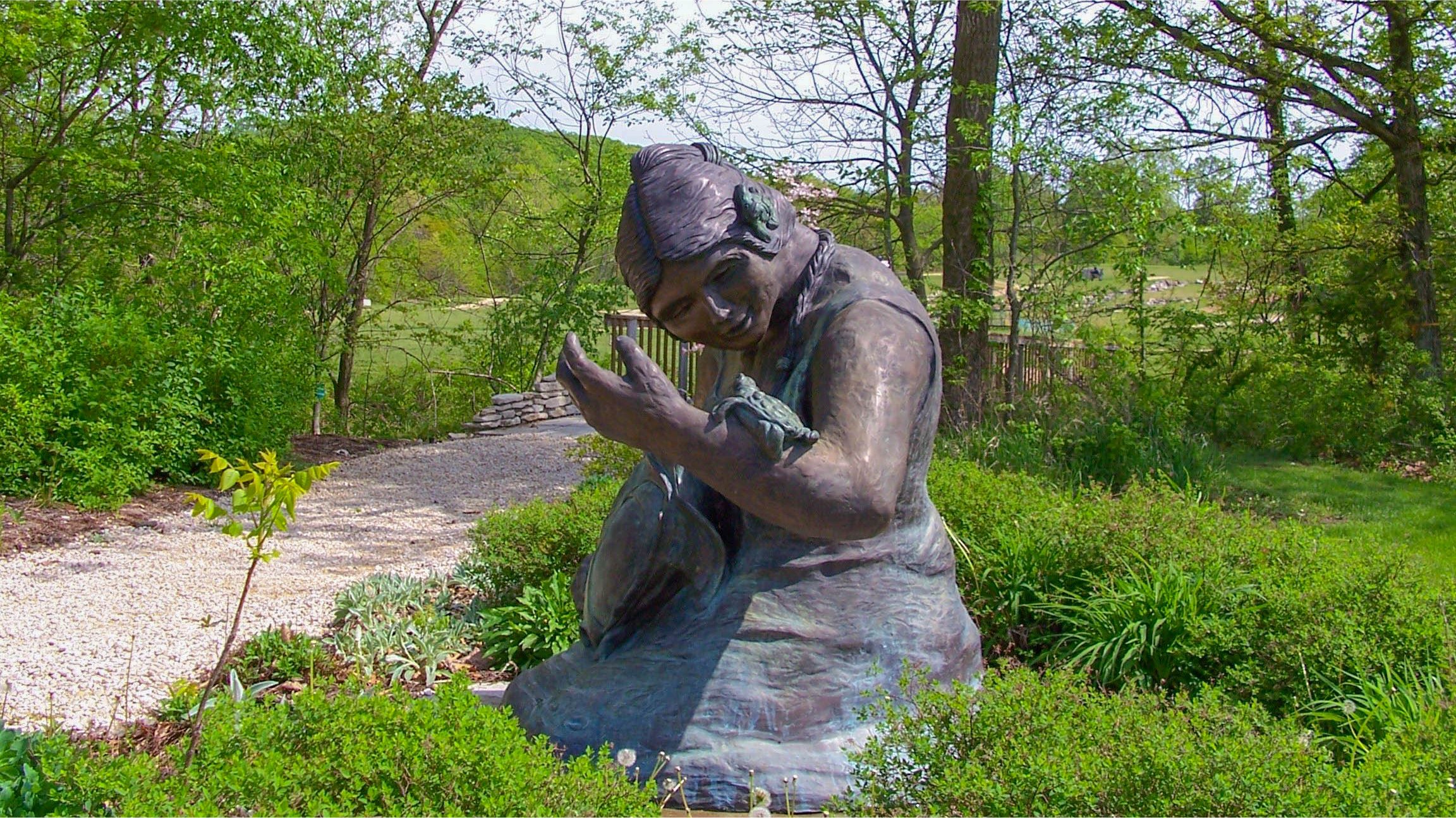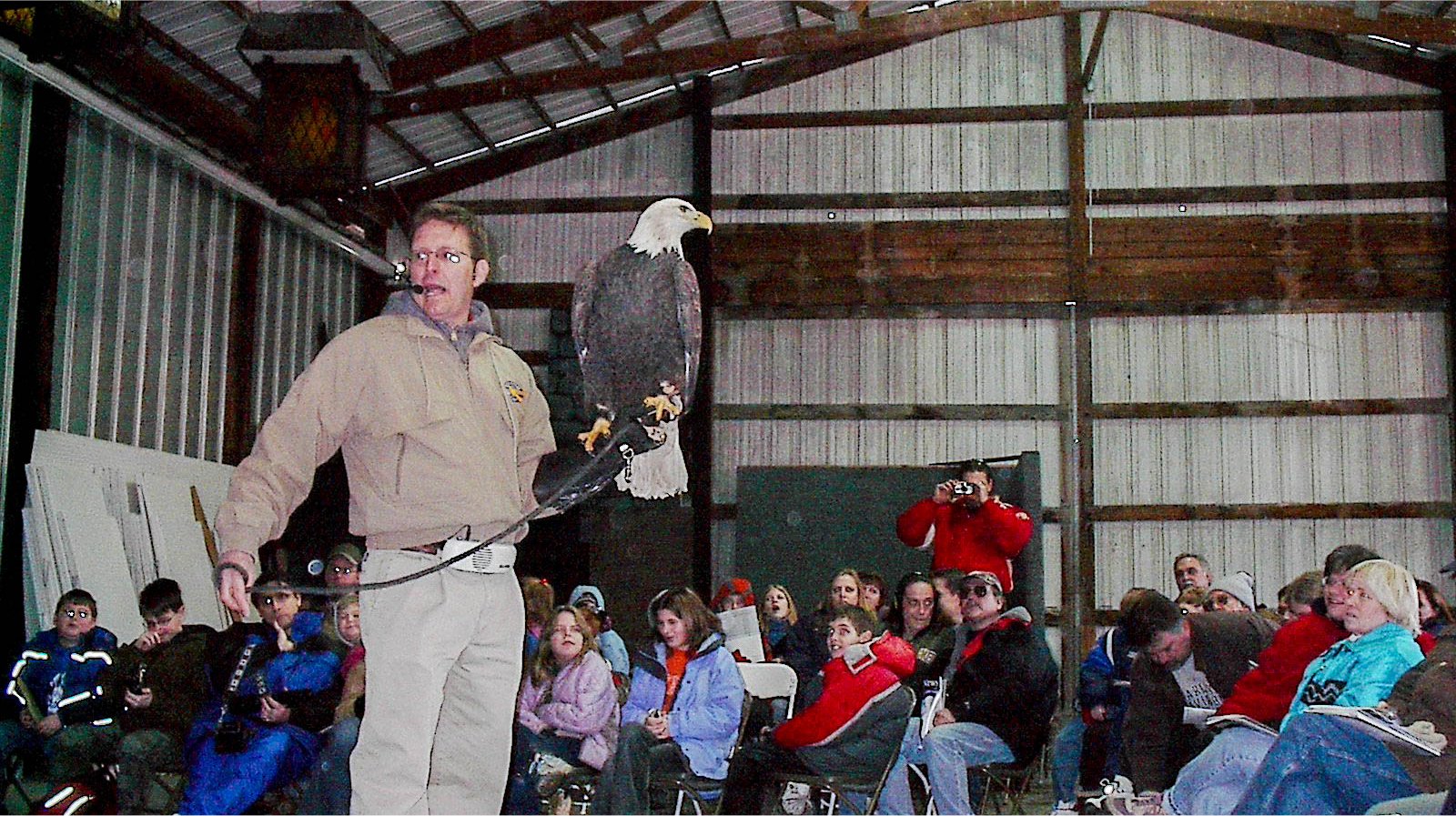678 State Route 147
Troy, Missouri
636-528-7247
The Visitors and Interpretive Center
A view of Missouri’s farmland from the Frenchman’s Bluff Trail
About 500,000 years ago during a stage of the Pleistocene Ice Age, a continental glacier of depths ranging from 1 to 2 miles thick covered most of northern Missouri. The great pressures caused by the glacier created the gentle rolling hills predominate north of the Missouri River. The Lincoln Hills of northeastern Missouri were not as affected as much leaving a rugged landscape with forested hills that more closely resembles the Ozarks. Located at the southern end of the Lincoln Hills near Troy in Lincoln County is Cuivre (pronounced "quiver") River State Park. The park is one of Missouri's largest and most rugged parks with 6,394 acres of upland woods, riparian forests, limestone glades, tall grass prairie, savannas, and bluffs. These diverse habitats allow the park to support a vast array of native plant and animal life.
Land in the Cuivre River area was acquired in the early 1930s for use as a federal recreation demonstration area. Local businessmen and civic leaders who wanted to bring a conservation project and jobs to the area convinced the National Park Service and the Civilian Conservation Corps to work on projects on the property. From 1936 to 1942 members of CCC Co. 3771 began building roads, small bridges, a rock picnic shelter, and several group camps. Many of these structures are still in use and have been placed on the National Register of Historic Places. In 1946 the property was transferred to Missouri's state park system.
Cuivre River State Park offers its visitors a wide range of activities. A staffed Visitor Center is located at the entrance to the park and includes interactive exhibits on the area's geology, wildlife, and how the park was formed. Cuivre River State Park offers basic, electric and electric, water and sewer campsites, an equestrian campground, and a special-use camping area. Three group camps constructed during the CCC era are available for group rental and include cabins, a dining lodge and recreation areas. Lake Lincoln, a 55-acre reservoir built in 1965 is located near the campground and features a swimming beach and a boat ramp for non-motorized boats. The 55-acre lake is stocked with largemouth bass, sunfish, and channel catfish. Three picnic areas, including a historic CCC rock picnic shelter, are located throughout the park. From May through September park naturalists conduct nature hikes, a variety of interpretive programs, and evening programs at the campground amphitheater.
The park has two wild areas and three natural areas that provide hiking, backpacking, photography, and wildlife observation opportunities. Habitats in these areas feature native prairie sinkhole ponds, and woodlands. Big Sugar Creek is one of the finest undisturbed streams left in northeastern Missouri. This creek, which resembles an Ozark streams, runs through a bottomland forest of sycamore, bur oak, black walnut and hackberry and is home to several species of fish rarely found in northern Missouri. Cuivre River State Park has an extensive trail system, consisting of 18 miles of trails open to equestrian use and 20 miles of hiking-only trails.
Bird Watching
Cuivre River State Park has 12 hiking trails provide a diverse range of habitats than can be experienced. The Lakeside Trail borders the entire shoreline of Lake Lincoln where you might see Bald Eagles in winter, ducks, geese, and swallows. The Big Sugar Creek Trail is an excellent place to find warblers, vireos, woodpeckers, flycatchers, and tanagers, which are among the park’s 207 bird species. Sparrows and other grassland birds can be found along the Blazing Star Trail. An area map and other information can be picked up at the Visitor Center. The Audubon Society of Missouri maintains a checklist of birds that can be found at the park.
Hiking
Cuivre River State Park’s 10 trails provide about 40 miles of trails for hiking with some that allow horseback riding. The trails traverse through all of the park’s natural features including native prairie, sinkhole ponds, woodlands, and a clear, rock-bottomed stream. Big Sugar Creek is one of the finest undisturbed streams left in northeastern Missouri. Several trails lead through the Lincoln Hills Natural Area and its many unique natural features. spring when many woodland wildflowers are abundant in the spring and wildflowers coexist with the prairie grasses in the summer and the fall.
Visiting Cuivre River State Park
Visiting Hours:
Day-use areas are open daily from 6 am to 10 pm, beach closes at 8 pm.
Visitor center and park office hours vary depending on season and day of week.
Check the official site for details.
There is no charge to visit Cuivre River State Park.
Explore the nearby communities of Troy, Moscow Mills, and Elsberry
Use the official site of Cuivre River State Park to find the answers to the questions about Cuivre River State Park that you may have.

















